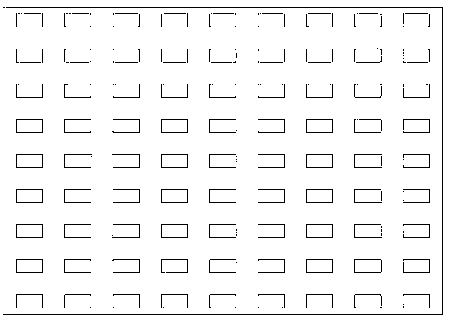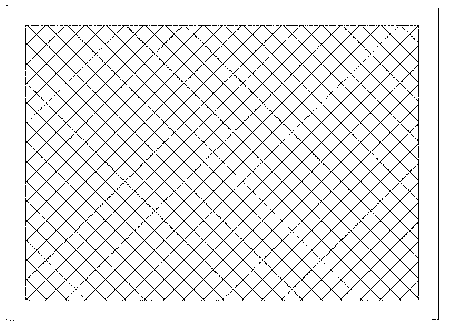Mold for preparing accellular small intestine submucosa matrix material
A small intestinal submucosa and matrix material technology, applied in the field of medical biomaterials, can solve the problems of affecting material porosity, destroying three-dimensional structure, etc., and achieve the effect of ensuring porosity
- Summary
- Abstract
- Description
- Claims
- Application Information
AI Technical Summary
Problems solved by technology
Method used
Image
Examples
Embodiment 1
[0020] The mold used for preparing the matrix material of the decellularized small intestine submucosa in this example consists of two parts: a negative sheet and a pressing net. Described bottom film is the square plate that pin is provided with on four sides, and described pin is perpendicular to square plate, as figure 1 shown. The press net is a square frame with a square frame structure or a mesh structure inside, and the four side lengths of the press net are all 1-3 cm shorter than the negative film. The unit shapes of the network structure include square, rhombus and circle. The frame structure pressing net is as figure 2 As shown, the mesh structure pressing net is as image 3 shown (shown as a rhombus). The height of the needles is 0.5-1.5 cm, the diameter is 0.5-2.0 mm, and the distance between the needles is 0.5-2 cm. There is welding between the needle and the square plate. The negative, the needle on the negative, and the pressing net are all made of 316L ...
Embodiment 2
[0022] The porosity of the decellularized porcine small intestinal submucosa matrix material prepared by using the mold provided in Example 1 was measured by mercury intrusion porosimetry, and compared with the product of Biodesign Surgisis. Results: The porosity of the acellular porcine small intestinal submucosa matrix material prepared by the mold provided in Example 1 was 87.8±2.51, and the porosity of the Biodesign Surgisis product was 78.3±6.38.
PUM
| Property | Measurement | Unit |
|---|---|---|
| height | aaaaa | aaaaa |
| diameter | aaaaa | aaaaa |
| porosity | aaaaa | aaaaa |
Abstract
Description
Claims
Application Information
 Login to View More
Login to View More - R&D
- Intellectual Property
- Life Sciences
- Materials
- Tech Scout
- Unparalleled Data Quality
- Higher Quality Content
- 60% Fewer Hallucinations
Browse by: Latest US Patents, China's latest patents, Technical Efficacy Thesaurus, Application Domain, Technology Topic, Popular Technical Reports.
© 2025 PatSnap. All rights reserved.Legal|Privacy policy|Modern Slavery Act Transparency Statement|Sitemap|About US| Contact US: help@patsnap.com



